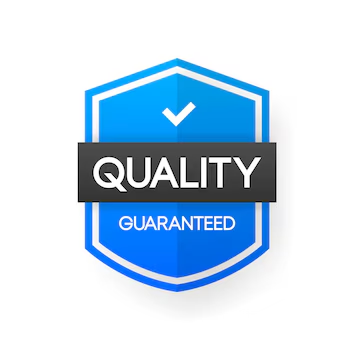I have attached two discussions pls read and respond to each. Please to do write both discussions together. ex discussion 1 (respond, then discussion 2 (respond.
DISCUSSION 1
A huge dilemma many businesses are experiencing right now is how to handle bringing staff back. In Arizona we just started the reopening process. My restaurants owner and myself have been evaluating all options as to what this looks like for the staff. The defining moments have been:
Deciding how we are going to protect them and patrons
Evaluating is the pay rate should be changed to account for a lesser amount of business
Accessing who is ready to come back and how to handle staff who do not feel comfortable reintegrating during this early stage, then deciding what course of action to take with the staff unwilling to work.
The last point has been the most ethically challenging, it presents a right vs right decision; asking people to work at their job vs respecting peoples health concerns. Luckily we had enough willing staff to come back, but we then had to decide how to move forward with the remaining staff. My suggestion was to discuss with them each individually about their concerns, and try to develop a way for them to get back to work while maintaining safety measures they felt comfortable with. I also suggested we create a further deadline, once we move into phase two before making any definitive decision about firing or hiring members of the staff.
If we apply the four questions proposed:
Which course of action will do the most good and the least harm?
Allowing the business to function reasonable, while providing the our dedicated staff time to adjust and build confidence does the most good and least harm.
Which alternative best serves others’ rights, including shareholders’ rights?
Allowing the staff willing to work and enthusiastic about the extra hours provides for a better work environment and experience for the guests.
What plan can I live with, which is consistent with basic values and commitments?
We could not live with forcing staff to come back or put ultimatums on the table. Though the business was affected, each individual involved was affected; we believe in our staff and pride ourselves on their family run business feeling like a home away from home. For that instilled value we were able to see past the temporary inconvenience to ensure we were supporting our staff.
Which course of action is feasible in the world as it is?
The chosen path we embarked on mirrors the world as we see it today. The same way there will be a phase system to business getting back to usual, our reintegration of our staff will be a phase process also. This allows us as leaders to feel like we are balancing the situation in a responsible and mindful way.
References
Christensen, D.S. & Boneck, R. (2010, May/June). Four questions for analyzing the right-versus-right dilemmas of managers. Journal of Business Case Studies 6, (3). 53-56. Retrieved from https://www.cluteinstitute.com/ojs/index.php/JBCS/article/viewFile/877/861
(Links to an external site.)
DISCUSSION 2
As a child, my uncle would often tell me do what you can live with and I think about his saying each time I am placed in a uncomfortable situation, especially professionally. Unfortunately, workplace politics are rapid throughout organizations across America. However, each person no matter their status in the organization is held accountable for any ethical action or inaction. While reading this weeks course materials, I thought of a professional dilemma I encountered in 2002. I was young and ecstatic professional who had landed my dream job in a local government agency. Everything seemed to be going well at the job until I witnessed a disturbing incident between my supervisor and peer. Unbeknownst to me, these two had been at odds for years. One day after work, I was talking in the parking lot with my peer who began sharing the unfair treatment against her by our supervisor. The supervisor must have sensed she was being discussed because she passed her car to come over to confront my peer and used derogatory language. Of course, my peer responded, and the two women had an belligerent confrontation in front of me. I stood in disbelief. I was speechless. I never imagined this type of behavior happened in a professional setting, especially not this prestige organization. Fortunately, a male peer came over and removed our peer and advised her to go home. I just stood there unsure of what I witnessed or why I had to be the witness. Throughout the night, I replayed the parking lot encounter in my head contemplating who was wrong. And, if I should have done anything to prevent this confrontation. Due to my character, values, and beliefs I felt the manager was terribly wrong. Furthermore, the next morning my supervisor informed me a investigation had launched against my coworker for her actions in the parking lot. Also, she reminded me I was on probation and I must give a statement. Her response regarding my probation led me to believe I needed to respond in her favor. I was torn and terrified because I was on a 90-day probation. I thought to myself, how can I get out of this? And, why is this happening to me? Honestly, I had convinced myself since I was indirectly involved; I did not need to give a statement. But in my heart, I knew it was the right thing do and I would have to face any retaliation later. So, I reluctantly provided my statement to directors. Ethically, I felt the manager was wrong for approaching my peer and my peer was not the aggressor. Although, my peer response was not ideal reaction between a manager and a subordinate, she was right in her reaction. In my opinion, it seems being ethical is somewhat about perception. See, if I did not like my peer and/or was trying to impress my manager, I would have given a statement in favor of my manager which would have been unethical. Furthermore, my personal values would not allow me to be unethical despite the possible backlash.
In my professional experience, managers tend to be held at a higher ethical standard and should conduct themselves in such a way. All employees should be mindful of their interactions with others, but managers are the examples of what ethical behavior is acceptable. Although managers have the complex task of enforcing rules, however, being mindful and intentional about encounters is essential for a ethical versus an unethical manager. Sadly, my previous managers unethical behavior placed me in a uncomfortable situation, but I knew morally and ethically, I had the responsibility to do the right thing. At the conclusion of the investigation, my peer did not receive any repercussions; the manager was reprimanded for lack of professionalism and advise not to engage non-exempt workers after hours. A few days later, my peer thanked me for speaking up for the right thing. Apparently, she shared with other peers too and I was being highly admired by other peers. A few months later, the head director shared his admiration for me being a person of integrity. And, this incident was the prelude for my reputation during my 11 years of employment. I witnessed a plethora of unethical practices during my government career, but I vowed to myself to remain true to my values, character and do what I could live with. As described in our course materials, the manager was acting what she assumed was appropriate behavior due the rules and customs of the directors. Byars, S.M., Stanberry, K., Shapiro, D., Boerner, B., Brancatelli, R., Chumney, W., Dendinger, L., Nantz, B., & Poepsel, M. (2018).
References:
Badaracco, J. (2010). Where right versus right dilemmas come from.
Byars, S.M., Stanberry, K., Shapiro, D., Boerner, B., Brancatelli, R., Chumney, W., Dendinger, L., Nantz, B., & Poepsel, M. (2018). Business ethics. ISBN-13: 978-1-947172-57-9. Retrieved from https://cnx.org/contents/kUrGbuHs@4.1:KCyr9xii@3/Introduction) (Section 1.3 & Section 5).
Herring, H (2018, January 16) EJewish Philanthropy. Should Leaders Be Held to a Higher Ethical Standards. Retrieved on May 21, 2020 from https://ejewishphilanthropy.com/should-leaders-be-held-to-a-higher-ethical-standard/
(Links to an external site.)
Prentice, R. (2019). My group versus your group. Ethics Unwrapped, McCombs School of Business. Retrieved from https://ethicsunwrapped.utexas.edu/my-group-versus-your-group





 August 8th, 2020
August 8th, 2020 

